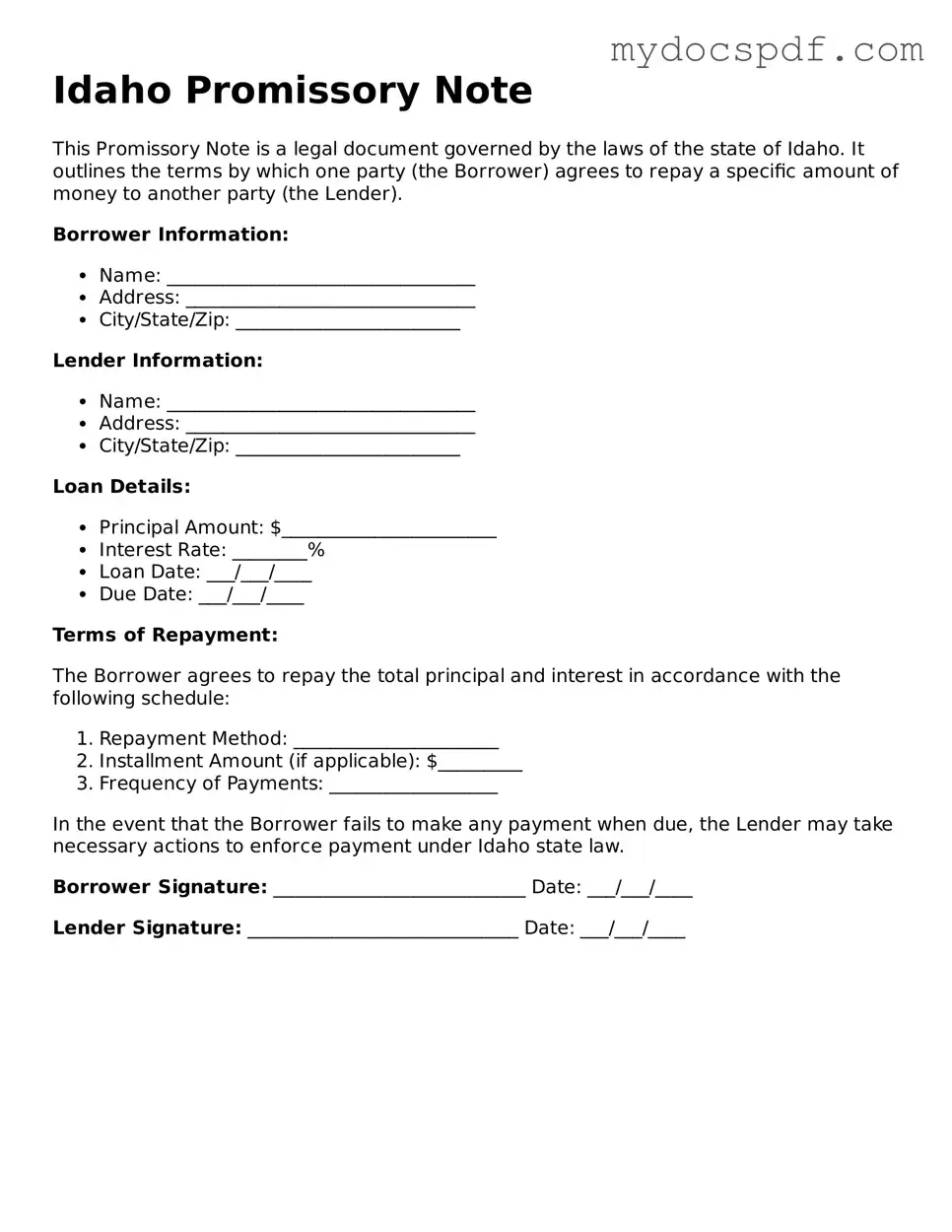Idaho Promissory Note
This Promissory Note is a legal document governed by the laws of the state of Idaho. It outlines the terms by which one party (the Borrower) agrees to repay a specific amount of money to another party (the Lender).
Borrower Information:
- Name: _________________________________
- Address: _______________________________
- City/State/Zip: ________________________
Lender Information:
- Name: _________________________________
- Address: _______________________________
- City/State/Zip: ________________________
Loan Details:
- Principal Amount: $_______________________
- Interest Rate: ________%
- Loan Date: ___/___/____
- Due Date: ___/___/____
Terms of Repayment:
The Borrower agrees to repay the total principal and interest in accordance with the following schedule:
- Repayment Method: ______________________
- Installment Amount (if applicable): $_________
- Frequency of Payments: __________________
In the event that the Borrower fails to make any payment when due, the Lender may take necessary actions to enforce payment under Idaho state law.
Borrower Signature: ___________________________ Date: ___/___/____
Lender Signature: _____________________________ Date: ___/___/____
